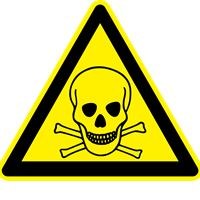(BRUSSELS) – The EU Commission took action Monday to further improve the protection of workers from the health risks linked to the exposure to dangerous chemicals: lead and diisocyanates.
The Commission proposes to amend two Directives: Directive 2004/37/EC on the protection of workers from the risks related to exposure to carcinogens, mutagens and reprotoxic substances at work (CMRD) for lead, and Directive 1998/24/EC on the protection of workers from the risks related to chemical agents at work (Chemical Agents Directive, CAD) for lead and diisocyanates.
Lead accounts for around half of all occupational exposures to reprotoxic substances. Approximately 300 cases of ill-health occur annually in the EU due to past exposure to lead. A significantly reduced exposure limit will help prevent health issues of workers, for example affecting reproductive functions and foetal development.
On the basis of the latest scientific evidence, the Commission today proposes:
- To further lower the occupational exposure limit from 0.15 milligrams per cubic meter (0.15mg/m3) to 0.03mg/m3, and
- To lower the biological limit value from 70 microgram per 100 millilitre of blood (70µg/100ml) to 15µg/100ml.
Regarding occupational exposure to diisocyanates, this accounts for 9% to 15% of all asthma cases in adults of working age. Peak exposure (meaning short duration, high intensity) is a key contributor to developing asthma. A new exposure limit will prevent cases of asthma and other respiratory diseases.
The Commission is proposing to introduce, for the first time, limit values to protect workers from exposure to diisocyanates at work. These limit values refer to the nitrogen, carbon, and oxygen group of diisocyanates, responsible for their ill-health effects:
- An overall occupational exposure limit of 6µg NCO/m3 (this stands for the maximum concentration of a substance in the air a worker breathes in a certain reference period, 8 hours) and
- A short-term exposure limit of 12µg NCO/m3 (this stands for a shorter reference period, 15 minutes. It applies when the negative health effects of a substance cannot be adequately controlled with an overall exposure limit, for instance during short but high intensity exposure).
Jobs Commissioner Nicolas Schmit said the measures would “better protect workers from lead by introducing drastically-reduced exposure limits. In addition, we propose, for the very first time, EU-level protective limit values for diisocyanates which can cause asthma and other respiratory diseases.”
Today’s proposal is the result of an extensive consultation process, including a two-stage consultation with social partners, and of close collaboration with scientists and representatives of workers, employers, and Member States. The Commission’s proposal will now be discussed by the European Parliament and the Council.
The proposal will now be discussed by the European Parliament and the Council. Once adopted, Member States will have two years to transpose the Directive into national law.



